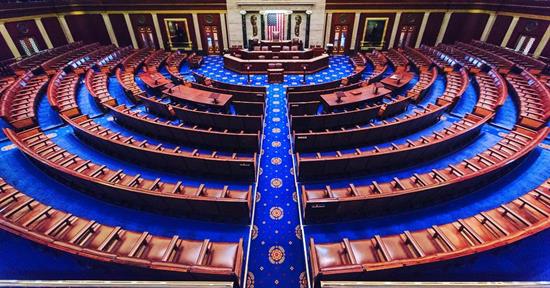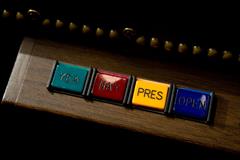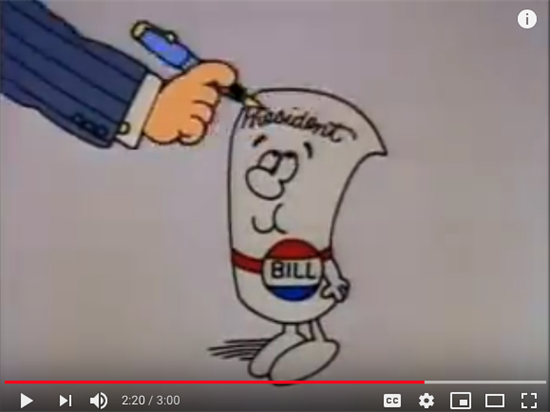What Happens After a Committee Reviews a Possible Law
Laws begin every bit ideas. These ideas may come from a Representative—or from a citizen like you lot. Citizens who take ideas for laws can contact their Representatives to discuss their ideas. If the Representatives agree, they research the ideas and write them into bills. When a Representative has written a nib, the bill needs a sponsor. The Representative talks with other Representatives near the bill in hopes of getting their back up for it. One time a bill has a sponsor and the support of some of the Representatives, it is gear up to be introduced. In the U.Southward. House of Representatives, a bill is introduced when it is placed in the hopper—a special box on the side of the clerk's desk. Just Representatives can introduce bills in the U.S. House of Representatives. When a neb is introduced in the U.Southward. House of Representatives, a beak clerk assigns it a number that begins with H.R. A reading clerk then reads the nib to all the Representatives, and the Speaker of the Business firm sends the bill to one of the House standing committees. When the bill reaches committee, the committee members—groups of Representatives who are experts on topics such as agriculture, teaching, or international relations—review, research, and revise the bill before voting on whether or non to ship the bill back to the House floor. If the committee members would similar more than information earlier deciding if the bill should be sent to the House floor, the bill is sent to a subcommittee. While in subcommittee, the bill is closely examined and expert opinions are gathered before it is sent back to the committee for approval. When the committee has approved a beak, information technology is sent—or reported—to the House floor. In one case reported, a pecker is ready to be debated past the U.Due south. Business firm of Representatives. When a bill is debated, Representatives hash out the pecker and explain why they agree or disagree with it. Then, a reading clerk reads the bill section past section and the Representatives recommend changes. When all changes have been fabricated, the bill is ready to be voted on. There are three methods for voting on a bill in the U.Southward. Business firm of Representatives: If a majority of the Representatives say or select yes, the pecker passes in the U.S. Firm of Representatives. The nib is then certified by the Clerk of the House and delivered to the U.Southward. Senate. When a bill reaches the U.S. Senate, information technology goes through many of the same steps information technology went through in the U.S. House of Representatives. The bill is discussed in a Senate committee and then reported to the Senate floor to exist voted on. Senators vote by voice. Those who back up the neb say "yea," and those who oppose it say "nay." If a majority of the Senators say "yea," the neb passes in the U.Southward. Senate and is ready to go to the President. When a bill reaches the President, he has iii choices. He can: If a bill has passed in both the U.S. House of Representatives and the U.S. Senate and has been canonical past the President, or if a presidential veto has been overridden, the bill becomes a law and is enforced by the authorities. To learn more, watch this informational video: 
Creating laws is the U.S. House of Representatives' nigh important job. All laws in the United States begin as bills. Before a bill tin can become a police, information technology must be approved past the U.S. House of Representatives, the U.S. Senate, and the President. Let's follow a bill'due south journey to become law.The Pecker Begins
The Bill Is Proposed
The Nib Is Introduced
The Pecker Goes to Committee
The Bill Is Reported
The Bill Is Debated
The Bill Is Voted On

The Bill Is Referred to the Senate
The Bill Is Sent to the President
The Bill Is a Law

Source: https://trahan.house.gov/kids/how-a-bill-becomes-a-law.htm
Post a Comment for "What Happens After a Committee Reviews a Possible Law"